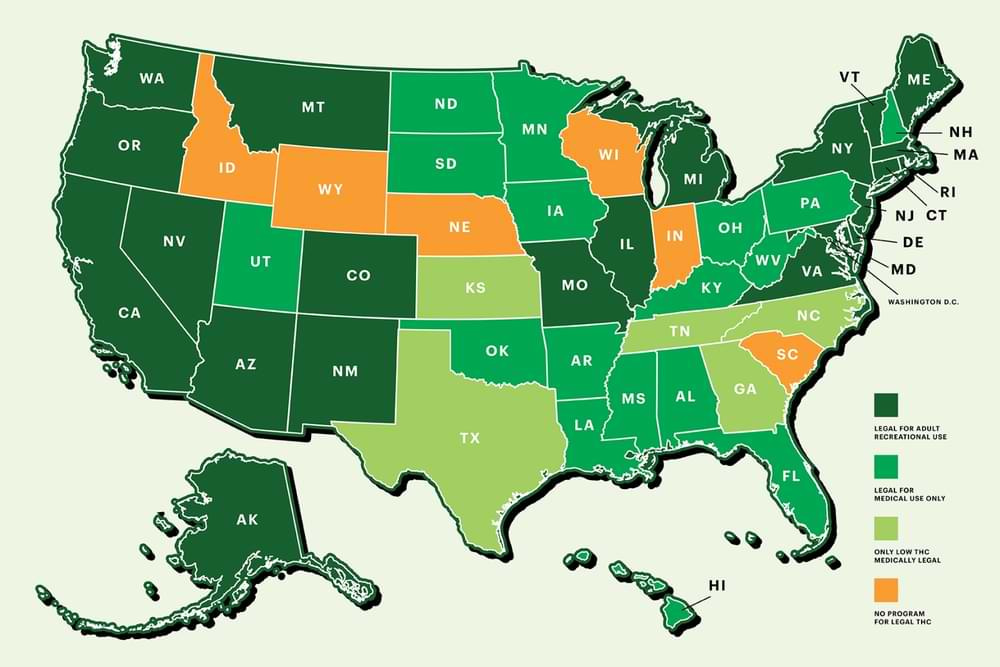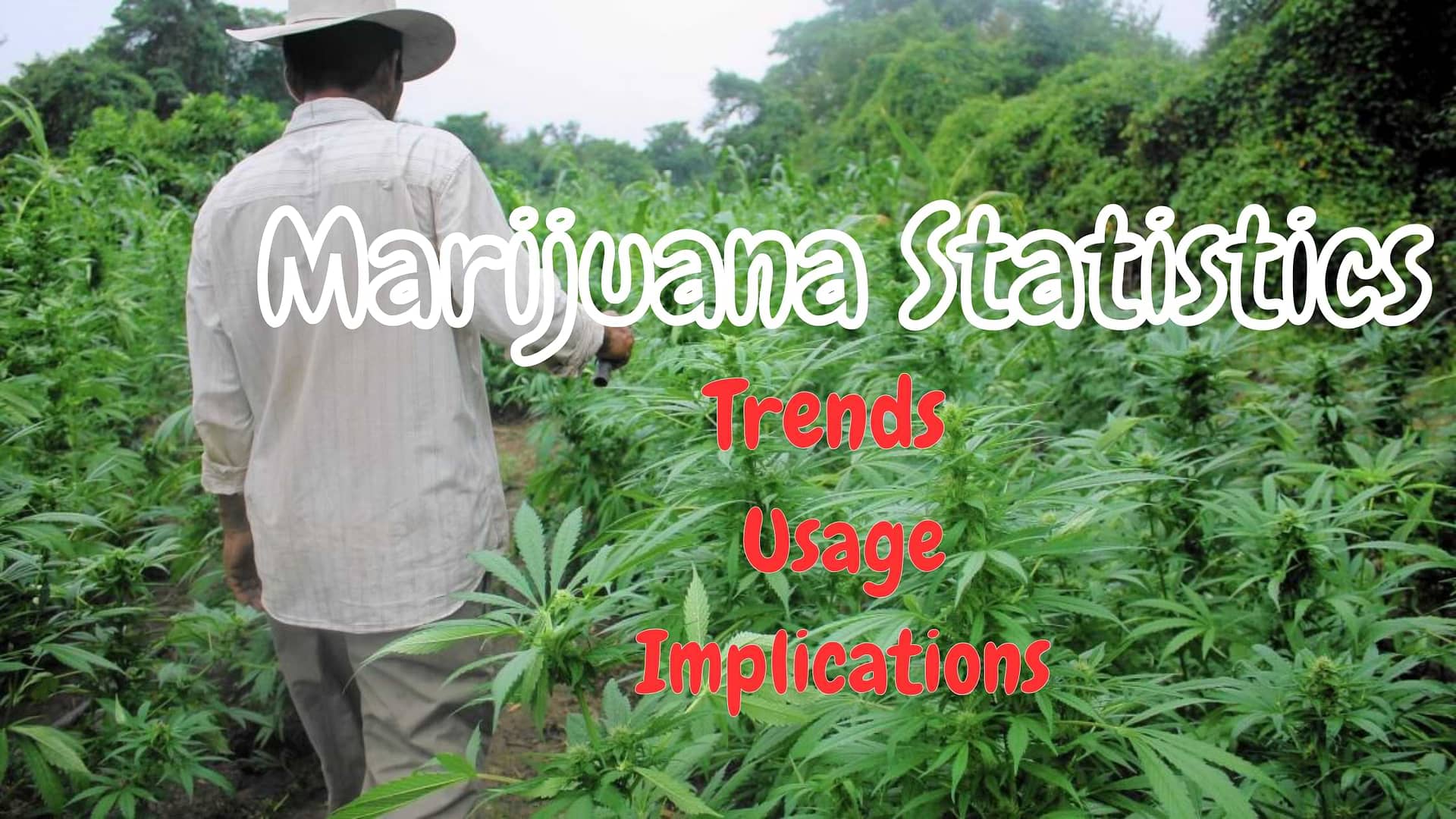In recent times, there have been big changes in how people think about and use marijuana, a plant that some folks smoke or eat to feel different. Some places have made it legal to use, while others still say it's not allowed. This article is all about the numbers and facts about marijuana, which we call “Marijuana Statistics.”
We'll look at things like who uses it, how they use it, and what good or bad things it might do to people's health. We'll also talk about how this affects money and what most people think about it. So, let's dive into these interesting numbers about marijuana together!:
Table of Contents
- 1 The State of Marijuana Legalization
- 2 Current Legal Status of Marijuana
- 3 States with Recreational Marijuana Laws
- 4 States with Medical Marijuana Laws
- 5 Marijuana Usage Trends
- 6 Marijuana Consumption Patterns
- 7 Demographic Analysis
- 8 Frequency of Use
- 9 Methods of Consumption
- 10 Health Implications
- 11 Impact on Physical Health
- 12 Medical Marijuana's Therapeutic Uses
- 13 Psychological Effects
- 14 Short-Term Effects
- 15 Long-Term Effects
- 16 Economic and Social Impact
- 17 Economic Benefits of Legalization
- 18 Tax Revenue and Job Creation
- 19 Social Implications
- 20 Impact on Crime Rates
- 21 Effects on Social Equity
- 22 Marijuana Statistics and Public Opinion
- 23 Changing Attitudes Towards Marijuana
- 24 Public Perception vs. Reality
- 25 Future Trends and Challenges
- 26 Emerging Marijuana Markets
- 27 Challenges in Marijuana Research
- 28 Potential Federal Legalization
- 29 Conclusion
- 30 Frequently Asked Questions (FAQs)
The State of Marijuana Legalization

Current Legal Status of Marijuana
The legal status of marijuana varies widely across the globe. In some regions, it's fully legal, while in others, it remains strictly prohibited. “Marijuana Statistics” play a pivotal role in tracking the ever-evolving legal landscape.
States with Recreational Marijuana Laws
Certain U.S. states, including Colorado and California, have embraced recreational marijuana, leading to not only increased consumption but also economic growth through taxation.
States with Medical Marijuana Laws
Medical marijuana has gained recognition as a viable treatment option for various health conditions. Understanding the legal frameworks and the number of states with medical marijuana laws is essential.
Marijuana Usage Trends
Marijuana Consumption Patterns
“Marijuana Statistics” reveal intriguing consumption patterns. How do different demographics use marijuana? Is it more prevalent among certain age groups or genders? These questions shed light on societal attitudes.
Demographic Analysis
By analyzing the demographics of marijuana users, we can better tailor public health campaigns and regulations. “Marijuana Statistics” help identify which groups are more likely to use it.
Frequency of Use
Do people use marijuana occasionally or regularly? The frequency of usage can impact its effects on individuals and society as a whole. “Marijuana Statistics” provide clarity on this front.
Methods of Consumption
From traditional smoking to edibles and concentrates, the methods of marijuana consumption have diversified. “Marijuana Statistics” capture these trends and their implications.
Health Implications
Impact on Physical Health
The effects of marijuana on physical health are complex. While it has therapeutic uses, excessive use can lead to health issues. “Marijuana Statistics” help researchers and policymakers weigh the risks and benefits.
Medical Marijuana's Therapeutic Uses
“Marijuana Statistics” aren't just about recreational use. They also encompass the growing field of medical marijuana and use to treat chronic pain and epilepsy.
Psychological Effects
Marijuana can have both short-term and long-term psychological effects. “Marijuana Statistics” delve into these effects and their potential implications for mental health.
Short-Term Effects
Understanding the short-term effects of marijuana, such as altered perception and impaired coordination, is vital for public safety and education.
Long-Term Effects
Prolonged marijuana use can lead to long-term consequences, including addiction and cognitive impairment. “Marijuana Statistics” highlight these concerns.
Economic and Social Impact
Economic Benefits of Legalization
One of the significant outcomes of marijuana legalization is its economic impact. “Marijuana Statistics” reveal the substantial tax revenue generated and job opportunities created.
Tax Revenue and Job Creation
How much revenue do states earn from marijuana taxes, and how many jobs are supported by the cannabis industry? These figures are key drivers behind legalization efforts.
Social Implications
Understanding the social implications of marijuana usage, such as its potential impact on crime rates and social equity, is crucial for informed policy decisions.
Impact on Crime Rates
Some argue that marijuana legalization can lead to reduced crime rates. “Marijuana Statistics” help evaluate whether this hypothesis holds true.
Effects on Social Equity
Legalization can also address social equity issues by rectifying historical injustices related to marijuana convictions. “Marijuana Statistics” illuminate progress in this area.
Marijuana Statistics and Public Opinion
Changing Attitudes Towards Marijuana
As marijuana legalization progresses, public attitudes are evolving. “Marijuana Statistics” provide insights into how these attitudes are changing and shaping policy decisions.
Public Perception vs. Reality
Are public perceptions of marijuana in line with the facts? “Marijuana Statistics” help bridge the gap between public opinion and scientific evidence.
Future Trends and Challenges
Emerging Marijuana Markets
The cannabis industry is evolving rapidly, with new products and markets emerging. “Marijuana Statistics” can predict future trends and challenges in this dynamic industry.
Challenges in Marijuana Research
Despite advancements, there are still research challenges surrounding marijuana. “Marijuana Statistics” shed light on the gaps in our understanding and areas needing further investigation.
Potential Federal Legalization
In the United States, federal legalization is a topic of discussion. “Marijuana Statistics” can inform the potential impacts of such a significant policy change.
Conclusion
The statistics surrounding marijuana whether related to trends, usage, or implications are vital for making informed decisions in a rapidly changing landscape. As we navigate the complex world of marijuana, staying informed through “Marijuana Statistics” will be key to addressing challenges and maximizing the benefits of this evolving industry.
Frequently Asked Questions (FAQs)
1. What are the latest statistics on marijuana legalization in the United States?
As of the latest available data, 18 U.S. states have fully legalized marijuana for recreational use, while 37 states have legalized it for medical purposes.
2. How do marijuana usage patterns differ between age groups?
Statistics show that younger adults, particularly those in the 18-34 age group, have higher rates of marijuana use compared to older age groups.
3. What are the potential health benefits of medical marijuana according to recent statistics?
Recent studies suggest that medical marijuana can be beneficial for conditions like chronic pain, epilepsy, multiple sclerosis, and chemotherapy-induced nausea.
4. Are there any notable trends in marijuana consumption methods?
Yes, there is a shift towards alternative methods of consumption, such as edibles and vape products, particularly in states with legalized marijuana.
5. What are the short-term psychological effects of marijuana, and how common are they?
Short-term effects can include altered perception, increased relaxation, and impaired coordination. These effects are common, but their intensity varies among individuals.
6. How does legalized marijuana impact a state's economy in terms of tax revenue and job creation?
Legalized marijuana can generate significant tax revenue, with some states reporting hundreds of millions in annual revenue. It also creates jobs in cultivation, distribution, and retail.
7. What are the social implications of marijuana legalization, particularly regarding crime rates and social equity?
Studies indicate that marijuana legalization may be associated with reduced crime rates, and efforts are being made to address social equity concerns through expungement of past convictions.
8. How have public attitudes towards marijuana changed in recent years, and what do the statistics reveal about this shift?
Public attitudes have become more accepting of marijuana, with a majority of Americans supporting legalization. Statistics reflect this change in sentiment.
9. What are the challenges currently faced by researchers studying marijuana?
Researchers face challenges related to federal regulations, limited access to research-grade marijuana, and the need for more comprehensive studies on its effects.
10. Are there any predictions or statistics on the potential federal legalization of marijuana in the United States?
While federal legalization remains uncertain, there is growing support for reform, and statistics may play a role in shaping future policies.

MD
Dr. Abramson’s expertise enriches our content, ensuring that our readers receive well-rounded and medically sound information about various health-related supplements.













+ There are no comments
Add yours